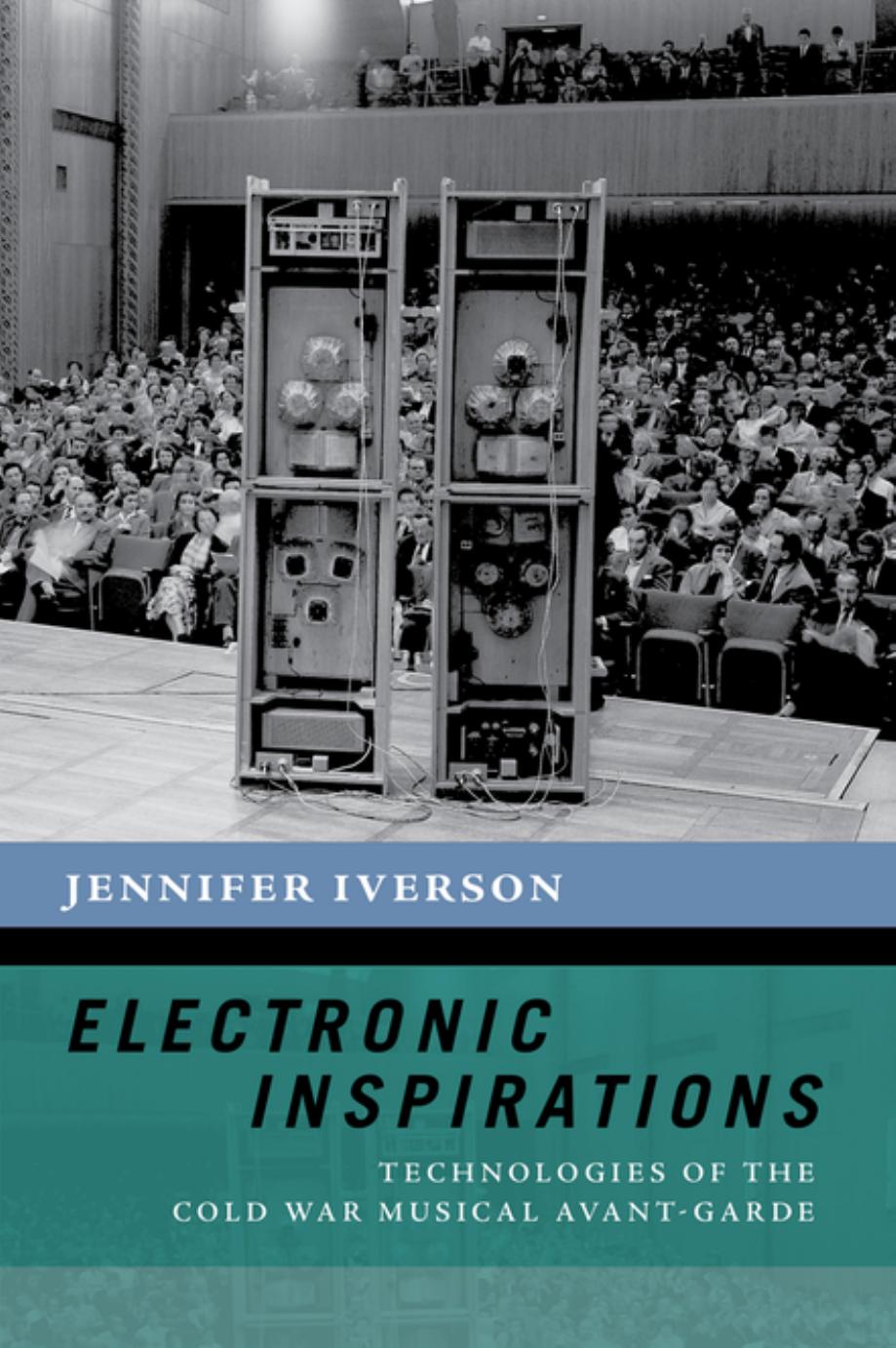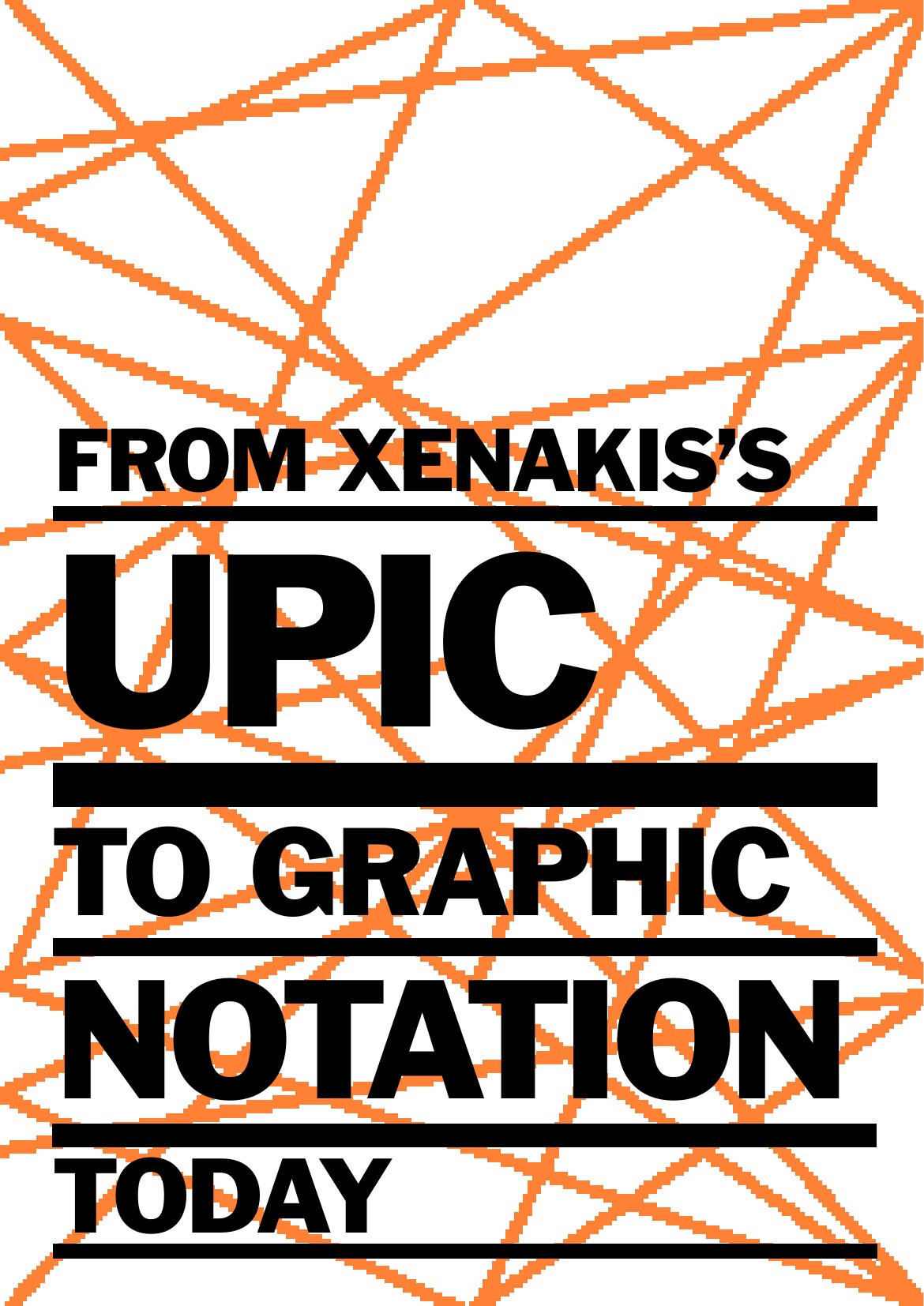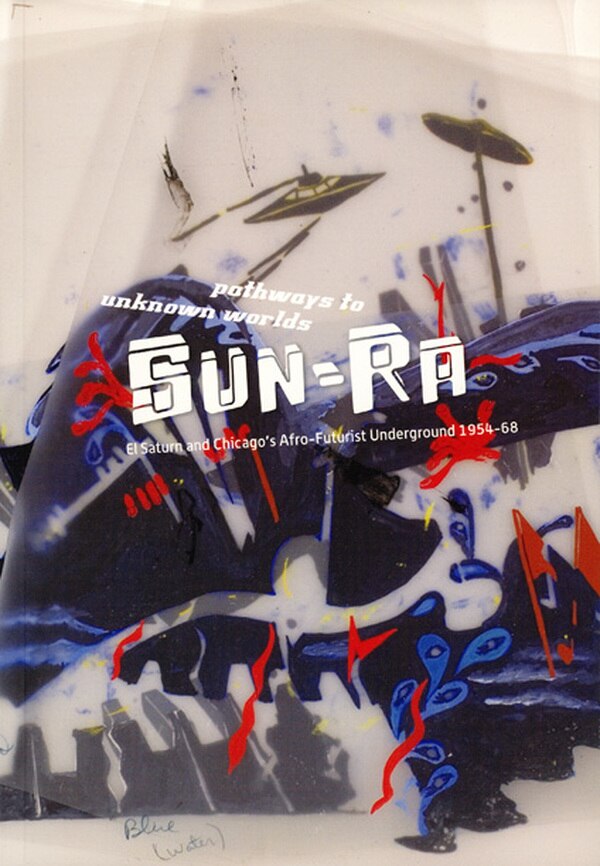Jennifer Iverson: Electronic Inspirations: Technologies of the Cold War Musical Avant-Garde (2018)
Filed under book | Tags: · avant-garde, cold war, collaboration, cultural history, electroacoustic music, electronic music, information theory, music history, technology

“Cold War electronic music—made with sine tone and white-noise generators, filters, and magnetic tape—was the driving force behind the evolution of both electronic and acoustic music in the second half of the twentieth century. Electronic music blossomed at the Westdeutscher Rundfunk (WDR [West German Radio]) in Cologne in the 1950s, when technologies were plentiful and the need for cultural healing was great. Building an electronic studio, West Germany confronted the decimation of the “Zero Hour” and began to rebuild its cultural prowess. The studio’s greatest asset was its laboratory culture, where composers worked under a paradigm of invisible collaboration with technicians, scientists, performers, intellectuals, and the machines themselves. Composers and their invisible collaborators repurposed military machinery in studio spaces that were formerly fascist broadcasting propaganda centers. Composers of Cold War electronic music reappropriated information theory and experimental phonetics, creating aesthetic applications from military discourses. In performing such reclamations, electronic music optimistically signaled cultural growth and progress, even as it also sonified technophobic anxieties. Electronic music—a synthesis of technological, scientific, and aesthetic discourses—was the ultimate Cold War innovation, and its impacts reverberate today.”
Publisher Oxford University Press, New York, 2018
The New Cultural History of Music series
ISBN 9780190868192, 0190868198
xi+303 pages
Reviews: Lucie Vágnerová (Integral, 2019), Ted Gordon (Current Musicology, 2019), James Davis (Music & Letters, 2019), Maurice Windleburn (Sound Studies, 2020).
PDF (32 MB)
Comment (0)From Xenakis’s UPIC to Graphic Notation Today (2020)
Filed under book | Tags: · composing, composition, computer music, graphic notation, music, music history, notation, software

“In the late 1970s, an interdisciplinary team led by the composer Iannis Xenakis developed the UPIC (Unité Polyagogique Informatique CEMAMu) out of an effort to transform drawings into synthesized sound. The composers can draw waveforms and envelopes straight onto an electronic tablet interface and translate them into sound through the computer. The revolution in graphic composition triggered by Iannis Xenakis and carried forward by other established computer musicians such as Jean-Claude Risset or Curtis Roads continues forty years later in modern computer programs.”
“Together with the Centre Iannis Xenakis, the ZKM is now addressing the genesis of this unique computational instrument and traces its technical, social, institutional, and educational significance up to the current practice of contemporary composers.”
Contributors: Richard Barrett, Rodolphe Bourotte, Pierre Couprie, Cyrille Delhaye, Alain Després, Julio Estrada, Kiyoshi Furukawa, Rudolf Frisius, Hughes Genevois, Kosmas Giannoutakis, Dimitris Kamarotos, Henning Lohner, François-Bernard Mâche, Guy Médigue, Chikashi Miyama, Lukas Nowok, Gerard Pape, Marcin Pietruszewski, Brigitte Robindoré, Julia Rommel, Julian Scordato, Takehito Shimazu, Victoria Simon, Andrey Smirnov, Ronald Squibbs, Katerina Tsioukra, Peter Weibel.
Edited by Peter Weibel, Ludger Brümmer and Sharon Kanach
Publisher Hatje Cantz, Berlin, and ZKM, Karlsruhe, 2020
Open access
ISBN 9783775747417, 3775747419
672 pages
PDF, PDF (12 MB)
Audio samples and additional archive material
Pathways to Unknown Worlds: Sun Ra, El Saturn and Chicago’s Afro-Futurist Underground, 1954-68 (2007)
Filed under book, catalogue | Tags: · afrofuturism, chicago, jazz, music, music history

“Philosopher, Afro-futurist, and jazz legend Sun Ra (1914-1993) constructed much of his complicated public persona during his sojourn in Chicago in the mid-1950s. Working with a still-shadowy underground fraternal organization, Ra amassed a library of books on the occult, Egyptology, race studies, Theosophy, and religion—all in service of drawing elliptical connections between these disparate bodies of knowledge. This work became the foundation of the personal mythology Ra employed in the 1960s when he began fronting his Myth-Science Arkestra and started drawing attention from more mainstream jazz fans.
Pathways to Unknown Worlds presents a kaleidoscopic range of materials from those years, including original record cover designs and production materials, paper ephemera, and photographs. These materials—most previously unseen—dramatically flesh out the story of Sun Ra’s mystical journey of discovery and his lofty goals for the dissemination of his new knowledge; they are certain to fascinate and delight Ra’s legion of fans.”
With essays by Adam Abraham, John Corbett, Glenn Ligon, and Camille Norment.
Edited by Anthony Elms
Publisher WhiteWalls, Chicago, 2007
ISBN 0945323107, 9780945323105
128 pages
via ARCH
Reviews: D. Scot Miller (2009), Daniel Kreiss (African American Review, 2012).
Exhibition (ICA Phil)
Distributor
WorldCat
PDF (16 MB)
Comment (0)
